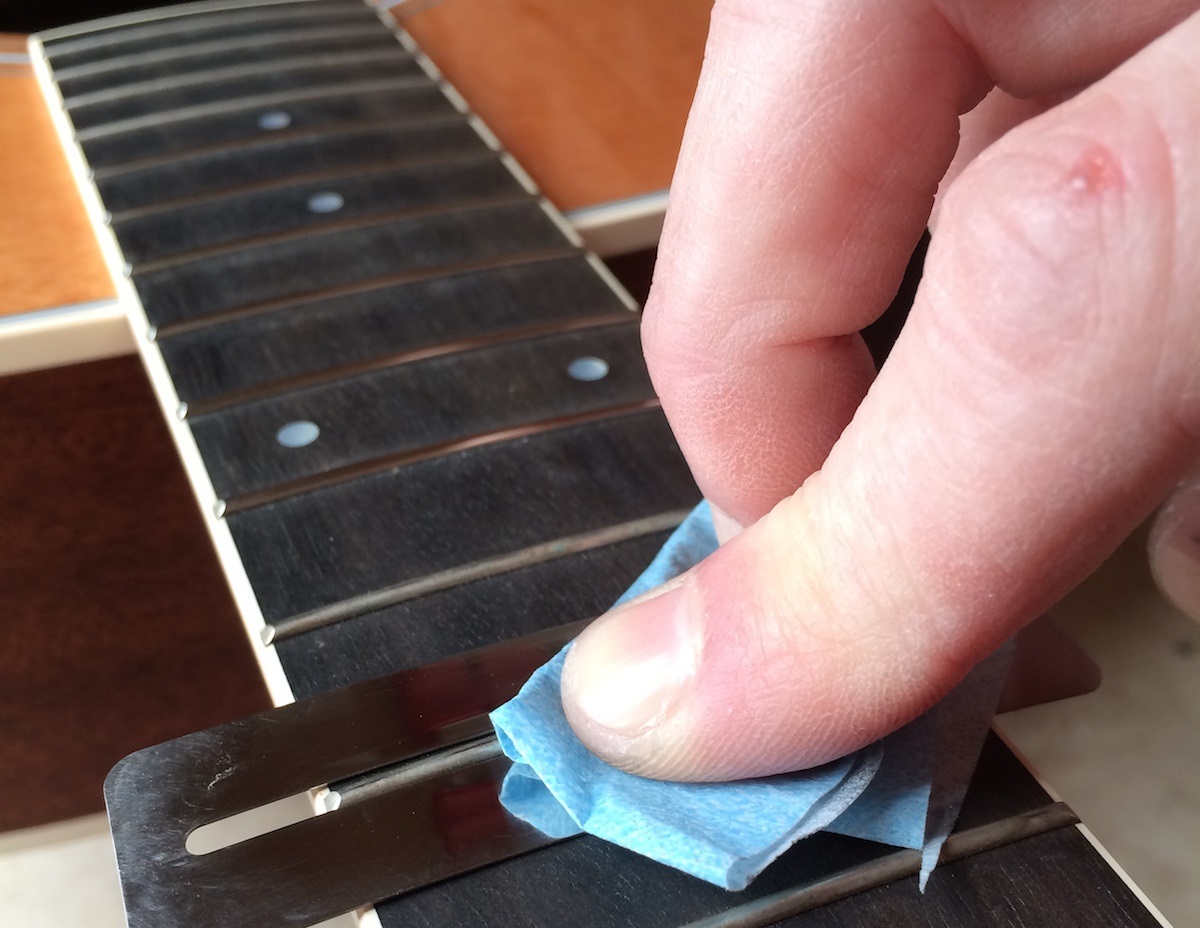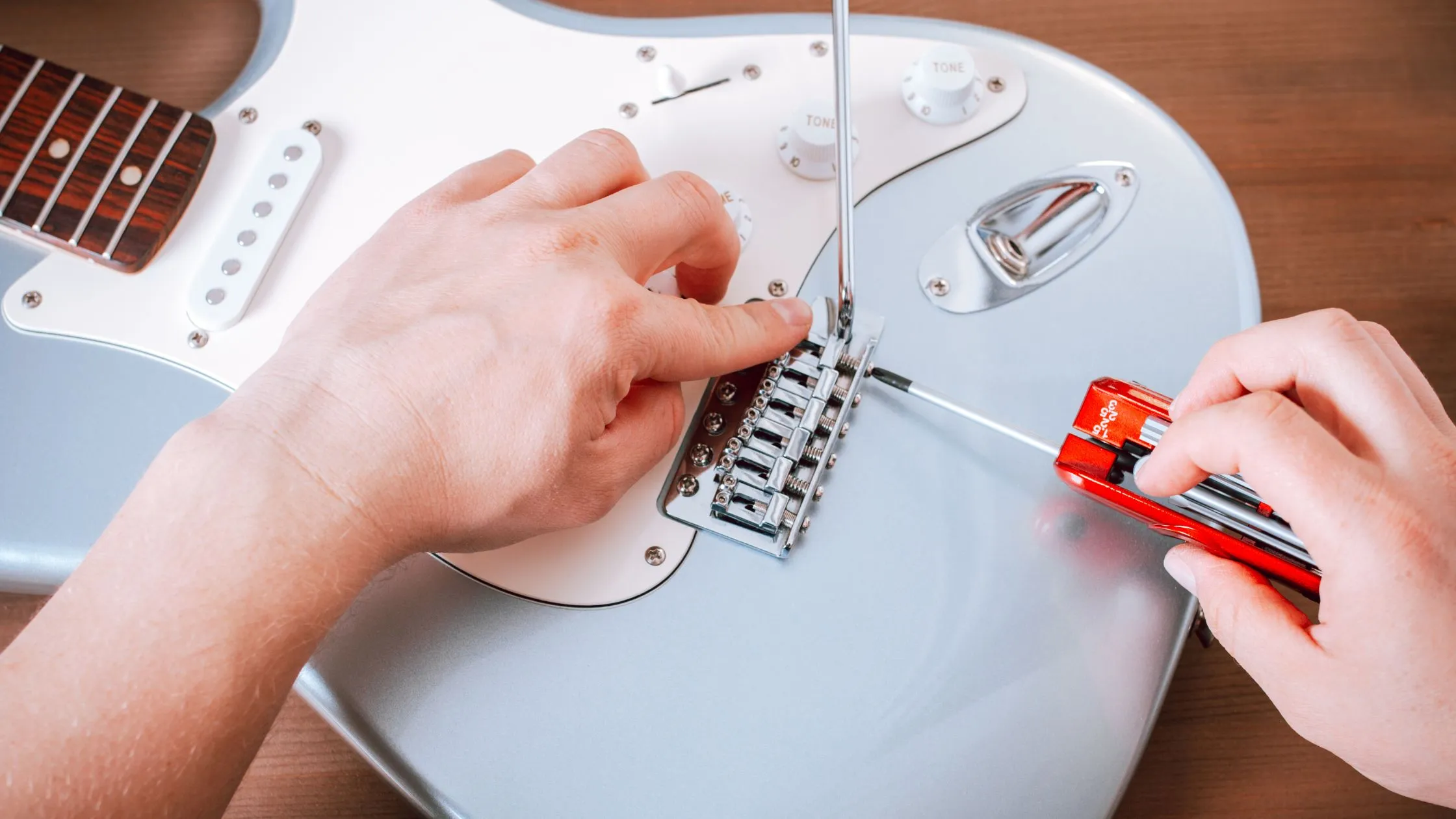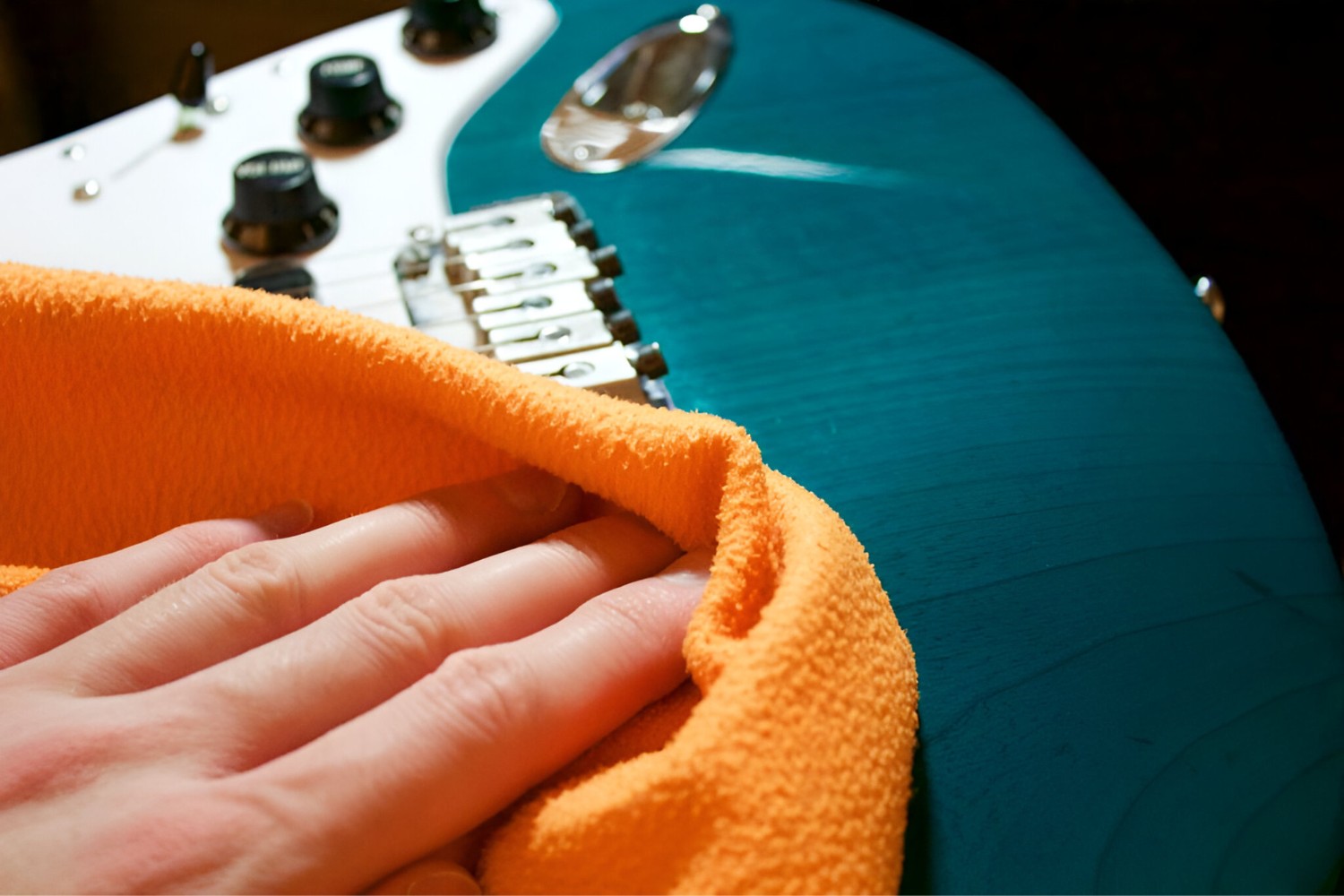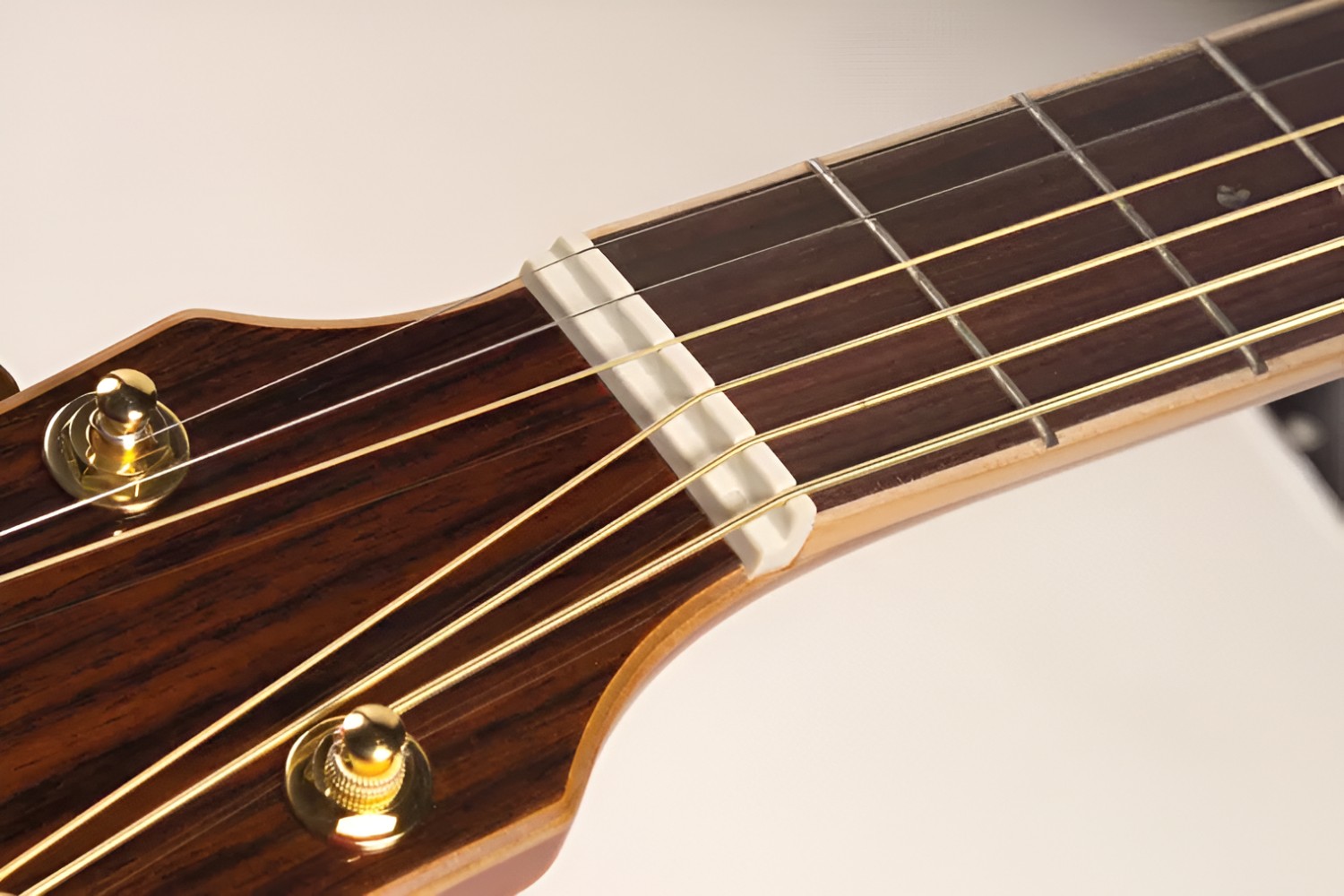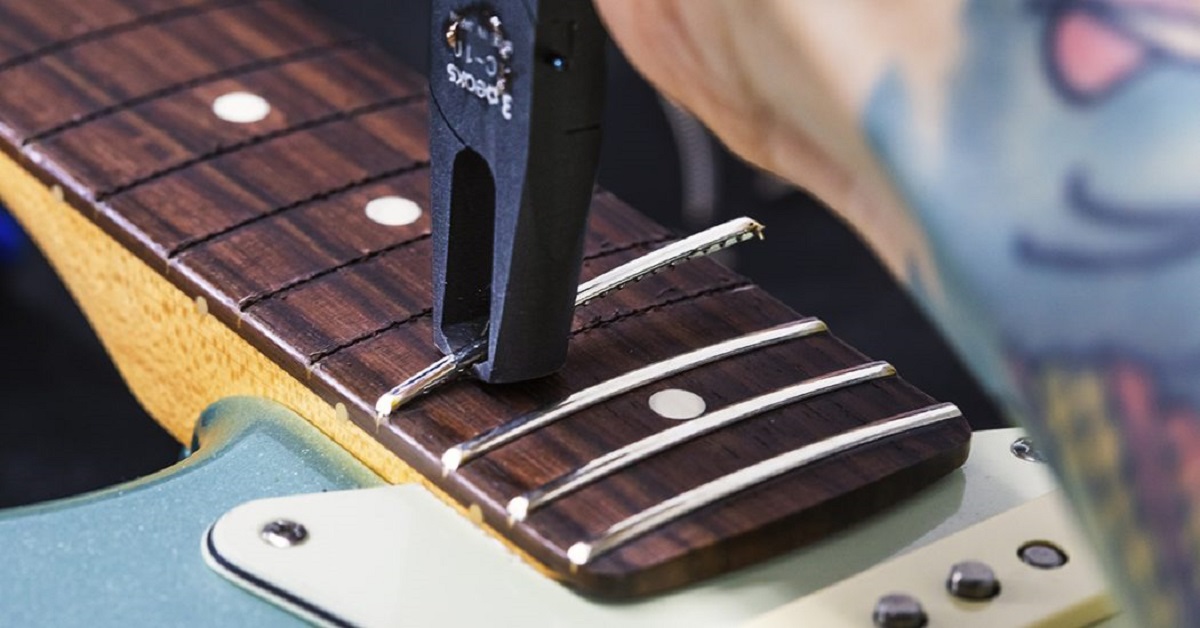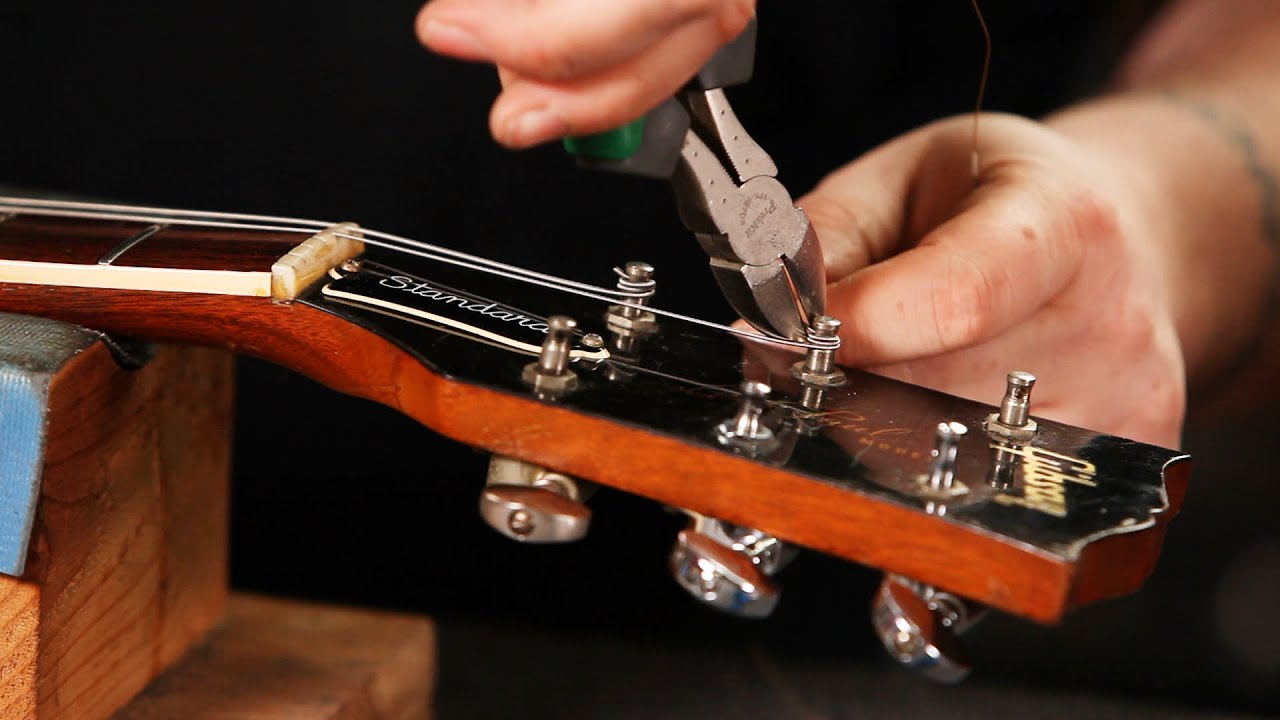Introduction
If you're a proud owner of an electric guitar, you know how important it is to keep your instrument in top condition. One crucial aspect of guitar maintenance is cleaning the fretboard. The fretboard is not only a vital component for producing great sound, but it also plays a significant role in the overall playability and longevity of your guitar. Whether you're a seasoned guitarist or just starting out, knowing how to properly clean your electric guitar fretboard is an essential skill that will help you maintain the instrument's quality and playability.
Cleaning the fretboard is not just about aesthetics; it directly impacts the tone and feel of your guitar. Over time, dirt, sweat, and grime can accumulate on the fretboard, affecting the sound and playability of the instrument. Regular cleaning not only preserves the visual appeal of the fretboard but also ensures that the strings move freely and the frets remain in good condition. Neglecting this maintenance can lead to a buildup of gunk, which may eventually affect the tone and playability of your guitar.
In this comprehensive guide, we will walk you through the process of cleaning an electric guitar fretboard, providing you with the knowledge and confidence to maintain your instrument in top condition. We will cover the reasons why cleaning your fretboard is crucial, the tools and materials you'll need, and a step-by-step guide to effectively clean and condition the fretboard. Additionally, we'll discuss the importance of ongoing maintenance to keep your fretboard in optimal condition.
By the end of this guide, you'll have a clear understanding of the importance of fretboard maintenance and the necessary skills to keep your electric guitar fretboard clean and well-maintained. So, let's dive in and learn how to give your fretboard the care it deserves.
Why Clean Your Electric Guitar Fretboard
Keeping your electric guitar fretboard clean is essential for several reasons. Firstly, a clean fretboard ensures that your guitar produces the best possible sound. Over time, dirt, sweat, and oil from your fingers can accumulate on the fretboard, affecting the resonance and sustain of the strings. By regularly cleaning the fretboard, you can maintain the optimal condition for producing rich and clear tones.
Secondly, a clean fretboard contributes to the overall playability of your guitar. Grime and residue buildup can cause the strings to drag and create friction against the fretboard, making it more challenging to play smoothly and accurately. By cleaning the fretboard, you ensure that the strings move freely and the frets remain unobstructed, allowing for effortless playing and improved performance.
Furthermore, regular maintenance of the fretboard can prevent potential damage to the instrument. Dirt and grime can lead to corrosion of the frets and other metal components, potentially compromising the structural integrity of the guitar. By keeping the fretboard clean and free from harmful buildup, you can extend the lifespan of your instrument and avoid costly repairs in the future.
Additionally, maintaining a clean fretboard is crucial for the visual appeal of your guitar. A dirty and grimy fretboard not only detracts from the overall aesthetic of the instrument but can also be off-putting to both the player and the audience. A well-maintained fretboard not only looks better but also reflects the care and attention you give to your instrument.
Finally, cleaning your electric guitar fretboard is an act of respect and care for your instrument. Your guitar is more than just a piece of equipment; it is an extension of your musical expression. By regularly cleaning and maintaining the fretboard, you demonstrate a commitment to preserving the quality and performance of your instrument, allowing it to continue inspiring you and others for years to come.
These compelling reasons underscore the importance of keeping your electric guitar fretboard clean, making it an indispensable aspect of guitar maintenance and care.
Tools and Materials Needed
Before embarking on the task of cleaning your electric guitar fretboard, it’s essential to gather the necessary tools and materials to ensure a thorough and effective cleaning process. Here’s a list of items you’ll need:
- Guitar Cleaning Solution: Choose a high-quality guitar cleaning solution specifically designed for fretboard maintenance. Avoid using household cleaners or abrasive chemicals that can damage the wood or frets.
- Fine Steel Wool or Fretboard Brush: Depending on the level of grime and residue, you may need fine-grade steel wool or a specialized fretboard brush to gently remove stubborn buildup without causing damage.
- Soft Lint-Free Cloths: Use soft, lint-free cloths to apply the cleaning solution and wipe down the fretboard. Microfiber cloths are ideal for this purpose as they are gentle on the wood and effectively remove dirt and grime.
- Fretboard Conditioner or Lemon Oil: To maintain the moisture and integrity of the fretboard wood, a fretboard conditioner or lemon oil is recommended. This helps prevent the wood from drying out and keeps it looking vibrant.
- Guitar Polish: While not essential for cleaning the fretboard, guitar polish can be used to restore the shine and luster of the guitar body and hardware after completing the fretboard maintenance.
- Protective Gloves: To protect your hands from the cleaning solution and to avoid transferring oils and dirt to the fretboard, wear protective gloves during the cleaning process.
- Small Phillips Head Screwdriver (if applicable): If your guitar has components that require removal for thorough cleaning, such as pickguards or control plates, a small Phillips head screwdriver may be necessary.
By ensuring you have these tools and materials on hand, you can approach the fretboard cleaning process with confidence, knowing that you have everything needed to effectively maintain and care for your electric guitar.
Step-by-Step Guide to Cleaning the Fretboard
Cleaning your electric guitar fretboard is a straightforward process that, when done correctly, can greatly enhance the instrument’s performance and longevity. Follow these steps to effectively clean and maintain your fretboard:
- Prepare the Work Area: Start by finding a well-lit and clean workspace where you can comfortably lay your guitar down for maintenance. Place a soft cloth or towel beneath the guitar to protect it from scratches or damage.
- Remove the Strings (Optional): While not always necessary, some guitarists prefer to remove the strings to access the fretboard more easily. If you choose to keep the strings on, you can work around them during the cleaning process.
- Apply the Cleaning Solution: Using a soft, lint-free cloth, apply a small amount of the guitar cleaning solution to the fretboard. Gently rub the solution into the wood, focusing on areas with visible dirt and grime.
- Remove Stubborn Buildup: For stubborn residue or buildup, use fine steel wool or a fretboard brush to gently scrub the affected areas. Exercise caution to avoid scratching the wood or damaging the frets.
- Wipe Down the Fretboard: Using a clean cloth, thoroughly wipe down the fretboard to remove any excess cleaning solution and dirt. Ensure that the fretboard is completely dry before proceeding to the next step.
- Condition the Fretboard: Apply a small amount of fretboard conditioner or lemon oil to a clean cloth and rub it onto the fretboard. This step helps to nourish the wood and maintain its moisture content, preventing it from drying out.
- Let the Fretboard Rest: Allow the conditioner or oil to penetrate the wood for a few minutes before using a fresh cloth to wipe away any excess. This resting period allows the wood to absorb the conditioning agent, keeping it supple and resilient.
- Reinstall the Strings (if removed): If you opted to remove the strings, carefully reinstall them, ensuring they are properly seated and tuned before playing.
- Clean the Guitar Body and Hardware (Optional): If desired, use guitar polish and a separate cloth to clean and polish the guitar body and hardware, restoring its shine and luster.
Following these steps will help you maintain a clean and well-conditioned fretboard, ensuring that your electric guitar continues to deliver exceptional sound and playability. Regularly cleaning and conditioning the fretboard will preserve the integrity of the wood and contribute to the overall longevity of your instrument.
Maintaining Your Fretboard
Maintaining Your Fretboard
Once you’ve cleaned and conditioned your electric guitar fretboard, it’s important to establish a regular maintenance routine to ensure the ongoing health and performance of the instrument. Here are some tips for maintaining your fretboard:
- Regular Cleaning: Schedule regular fretboard cleanings to prevent the buildup of dirt, sweat, and grime. Depending on how frequently you play, aim to clean the fretboard at least every few months or as needed.
- Use a Microfiber Cloth: When wiping down the fretboard, use a soft microfiber cloth to remove dirt and oil without leaving lint or scratches on the wood surface.
- Monitor the Condition of the Fretboard: Periodically inspect the fretboard for any signs of dryness, cracking, or excessive wear. Address any issues promptly to prevent further damage to the wood.
- Reapply Conditioner as Needed: Depending on the climate and frequency of use, the fretboard may require additional conditioning to maintain its moisture content. Apply fretboard conditioner or lemon oil as needed to keep the wood nourished and protected.
- Protect the Fretboard During String Changes: When changing guitar strings, take care to protect the fretboard from accidental scratches or damage. Place a cloth beneath the strings to shield the fretboard during restringing.
- Store Your Guitar Properly: When not in use, store your guitar in a suitable case or stand to protect it from environmental factors that can affect the fretboard, such as extreme temperatures and humidity.
- Regularly Monitor and Adjust Action and Intonation: Keeping your guitar properly set up ensures that the fretboard and strings are in optimal condition for playing. Regularly monitor and adjust the action and intonation as needed to maintain playability.
By incorporating these maintenance practices into your guitar care routine, you can ensure that your electric guitar fretboard remains in excellent condition, preserving its tone, playability, and visual appeal for years to come. Remember that the fretboard is an integral part of your guitar and deserves regular attention and care to maintain its performance and longevity.
Conclusion
Cleaning and maintaining your electric guitar fretboard is a fundamental aspect of guitar care that directly impacts the instrument’s tone, playability, and longevity. By understanding the importance of fretboard maintenance and following a proper cleaning and conditioning routine, you can ensure that your guitar continues to deliver exceptional sound and performance.
Regularly cleaning the fretboard not only enhances the visual appeal of the instrument but also contributes to the clarity and sustain of the tones produced. Additionally, a clean and well-maintained fretboard facilitates smooth and effortless playing, allowing you to fully express your musical creativity without hindrance.
Remember that the fretboard is a living part of your guitar, and proper care and maintenance are essential to preserve its integrity and performance. By using the right tools, following a thorough cleaning process, and establishing a regular maintenance routine, you can extend the life of your fretboard and enjoy the full potential of your electric guitar.
So, take the time to care for your fretboard, and it will reward you with years of beautiful music and reliable performance. Whether you’re a seasoned guitarist or just starting out, nurturing your instrument through proper fretboard maintenance is a rewarding practice that honors the art and craftsmanship of the electric guitar.
Now that you have the knowledge and guidance to clean and maintain your electric guitar fretboard, embrace this essential aspect of guitar care and let your instrument shine in both sound and appearance.







